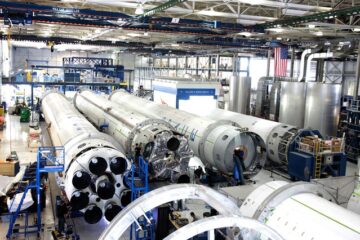Product development is a process that an item goes through from conceptualization to the final good or service. The main aim of product development is to increase the product’s market value and satisfy the end-user. At times, a customer may dislike some products, and thus the producer should focus on improving them.
Various steps in the product development process may differ from one company to another, but some are common in all products. Regardless, every development phase must include qualitative market research even when it is at the idea stage, design, and after launching.
The New Product Development Process
Ideation
This is the first stage where the business seeks new ideas about new product opportunities. The process may involve updating a previous product or changing it according to market demands and trends. It is also good to research the product’s competitors and develop a product that will win the consumers.
The ideation stage’s objective is to solve a problem by coming up with a service or product to fill the gap.
Idea Screening
Bring all your ideas to the table, filter them and keep those that are worthwhile. That process is called product validation which can be achieved by;
- Informing your friends and family about your idea
- Using online surveys to gather people’s feedback
- Using Reddit to gain product’s feedback
- Using Google trends for researching purposes
- Conducting a crowdfunding campaign
Regardless of the approach, you decide to use, take both negative and positive feedback and analyze them. But do not assume that all those who showed interest are potential customers until they buy the products or services.
Competitive analysis– It is common to find competitors of your services or products all over. Therefore, do competitive analysis by checking your competitor’s sites and signing for their mails to get an idea of how they attract their customers.
After combining the product validation and competitive analysis reports, you will gauge and level of demand that your service or goods have and the competition levels before proceeding.
Market analysis
Also known as a marketing strategy, this stage identifies how to market and sell products and services. The phase consists of the following;
Product– This is the product or service that the business has introduced to the target group.
Price– How you price your services and products affects the profit and supply.
Promotion– A business can conduct product promotion through an advertisement online, posters, and social media. The objective of advertising is to take the service or products to the target audience.
Placement– Every product or service has the actual placement location; whether it’s an online transaction, the customer must know where to get the product or service.
A company should aim at regular adjustments to its marketing strategy to fit in this world of changing technology.
Prototyping
The idea behind prototyping is to make or create a finished sample product to showcase to the customers. During this experimenting process, you can make various versions of the products. Afterward, you can eliminate those that aren’t appealing based on the consumer’s perspective and settle for the best sample.
Prototyping also depends on the value of your products. Those with basic knowledge of fashion, jewelry, and design can prototype their products. Nonetheless, most businesses prefer the use of third parties. For instance, you can consult cobblers if you are in the shoe business.
Sourcing
Once you settle for the best version of your products or services, it time to look for materials suppliers and other partners who’ll facilitate production. Search for suppliers online or attend trade shows related to your business. It is advisable to look for multiple suppliers to compare prices and get a backup plan if one of them fails.
Still, while sourcing, you will decide if to use local or international suppliers. Check the cost, advantages, and disadvantages and see which option is the best. The commonly used platform for overseas sourcing is Alibaba.
Pricing
After research, prototyping, and sourcing, calculate the cost of production of the product. Also, ask around and check the price of similar products in the market to avoid going too low or high, affecting your sales. In most cases, customers buy products based on quality, price, and product design. So, the pricing determines if the product will grow or not.
Launching
After going through the above process, the product is now ready for launching. Update your customers through emails, your site, and other means. The life of a product will be greatly influenced by the reception by the target audience and competition.
Now that the new product has become part of its products, continuous product development is necessary. It ensures the product is upgraded and improved according to the market demands.
Summary
Product development is unique to every product in the market, and every manufacturer goes through different challenges. It is not easy to transform an idea into a complete product or service; you will face challenges and failures along the way. But do not lose focus, product development is an evolving process, and you can learn through mistakes. The product development process is crucial and should be observed.

0 Comments